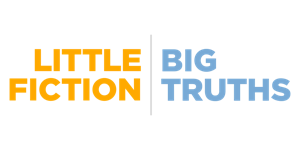MY mother was a lot of things, but a good cook wasn’t one of them. She boiled the color out of vegetables and cooked noodles until they dissolved. All protein, from fish to fowl, was dredged in all-purpose flour, then fried in a skillet with a sprinkle of dried parsley. No salt. No pepper. No flavor.
Once, when I was in high school and having dinner at a friend’s house, I had to ask what I was eating.
“It’s chicken,” my friend’s mother said, and I was shocked. I had no idea chicken could be moist.
No doubt my mom would have resented the food that filled her kitchen after her death. She would have thought everyone was showing off, especially when it came to the tiny finger sandwiches from the ladies’ guild at her church and the potato salad decorated with radish roses. Oh, she would have hated that.
She also would have been sad to see other people offering sustenance to my siblings and me. Our mom grew up during World War II, a childhood spent with an aching, empty belly, and she wanted more for her children. So while she didn’t always give us the proper food to fill our bodies—Hostess cupcakes and Tab, iceberg lettuce and broccoli cooked until it turned grey—she made certain we were never hungry. She loved us to the point of fattening us up.
• • •
My mom had only been dead for one day when the casseroles arrived.
First was a turkey dumpling bake from the next-door neighbor. They threw in a cherry cheesecake for good measure. The people across the street carried over Southwest Tamale Pie, a layered dish of chicken, tortillas, cheddar cheese, and Ro-Tel canned tomatoes. A Post-it note gave stern reheating instructions (“Do NOT remove from oven until brown and bubbly”).
My dad’s old friend brought lasagna—two kinds, meat and vegetable—plus a punch bowl filled to the brim with iceberg lettuce and homemade ranch dressing. “You need to watch out for your own health,” he said when he handed it over.
My sister’s hairdresser gave us a square pan of slippery beef noodles with mushrooms. Her workout partner whipped up her specialty, Cowboy Casserole, a hearty mix of ground beef, chili beans, tater tots and cream cheese. For the vegetarians, a teacher from the local elementary school gave us a small container of Broccoli Salad Surprise. The surprise was that it contained bacon.
My mother’s death was the first in my immediate family, so I was shocked by the volume and array of food—the nonstop deliveries, the loaves of bread that seemed like Jesus himself multiplied them for the masses.
During those somber days, my newly abbreviated family ended up with enough food to feed us for months. This is how people mourn in the Midwestern town where I grew up. Here the grieving process was constructed out of casserole dishes, and sympathy was baked into nine-by-thirteen-inch rectangles.
When the fridge overflowed with foil-wrapped pans, our freezer carried the rest of the burden. The kitchen counter was stacked with additional, equally practical gifts. Paper plates, plastic cutlery, napkins and Kleenex. Temporary things, things that could be discarded.
Our neighbors had obviously done this before. Each pan was marked with a streak of masking tape, the owner’s name handwritten across it with Sharpie. We were allowed to be sad, sure. But we still had to return the cookware.
• • •
My mom spent a decade dying of Alzheimer’s disease, gradually becoming a husk of a woman. First she forgot my name, then she forgot how to speak, and finally she forgot how to walk. That’s the thing about Alzheimer’s—it’s not only that the mind abandons the person with the disease. It’s that the mind completely disconnects from everything else. It’s like tugging all the hoses and wires from under a car’s hood and expecting the vehicle to still run. It won’t.
When she lost the ability to eat and swallow, my mom was moved from a nursing home to hospice. My family had decided a long time ago that we wouldn’t put my mother on a feeding tube, so once she moved to hospice, we knew it was only a matter of time before she succumbed to insufficient nutrition.
My mom, who spent her adult life counting calories, watching her figure, and sampling every fad diet, starved to death in just a few days.
• • •
When I peeked into her open casket, I didn’t expect her to look so beautiful, so much like the mom I once knew. Her cheeks bloomed like carnations. Her blonde hair was teased and sprayed into a halo of perfect curls. She wore her prettiest blue dress, a dress she hadn’t worn in ages, even long before the Alzheimer’s, because of a few stubborn pounds.
I remembered when I was a little girl, maybe six or seven years old, and my mom introduced me to the concept of a weekly weigh-in. First she stepped on the scale, then she recorded the number on a handmade chart that was taped to the back of the bathroom door. Then it was my turn. I stepped on the scale, put my hands on my hips, and moaned in a perfect imitation of my mom. “Fifty-six pounds?” I’d cry out. “I’m disgusting.”
I wished I could gather up all that weight now, all those pounds gained and shed, and give them back to her. I’d use those calories to nourish her for one more day. One more hour. I wondered what happened to the weight that she lost. Where were those pieces of my mother now?
In her coffin, she looked so real and ripe. I could almost imagine curling up beside her. I touched her hand to be sure she was dead. Her skin was cold, and I pulled back with surprise.
I didn’t realize I was shaking until my aunt put an arm around my shoulders and led me into the funeral home kitchen. She pointed to a plastic sleeve of wheat bread and a platter of cold cuts.
“Let me make you a sandwich,” my aunt said. “We’ve got that spicy mustard you like.”
In the deepest throes of grief, I didn’t actively eat as much as I allowed myself to be fed.
• • •
My mom was buried on a gentle slope in a veterans’ cemetery in Dayton, Ohio, the place where my retired Air Force dad will someday join her. The cemetery staff plowed through the snow to make room for our cars. They rolled out fake grass where my mom’s coffin rested during the brief service. There was a small shelter, but the wind was punishing, and I howled in pain. I had never felt so cold.
During the sad, angry days that followed, my brother polished off a chocolate cake, while my sister dipped ridged potato chips into bowls of fluffy mashed potatoes and fed them to me.
“If only we could add another form of potato to this,” I said. “Then I’d be happy.”
But the truth was that I could not eat enough comfort food to feel comforted.
With all the dishes that were generously cooked and brought to my home, nothing could satisfy what I felt—a wild, heavy hunger, almost as powerful as what my mother felt as her body betrayed her—and nothing ever would.
Our mother was German. She came from the land that coined the term kummerspeck or “grief bacon”—excess weight gained from emotional overeating. As her offspring, we understood that concept so well, this eating to fill all the empty spaces.
Our neighbors instinctively knew it too, which explained all the noodles, cakes and salad, the freezer full of casseroles, and the counter full of bread. They simply wanted us to be full again.

GET THE PRINT VERSION | download THE EPUB

© 2015 Maggie Downs. Published by Little Fiction | Big Truths, June 2015.











































